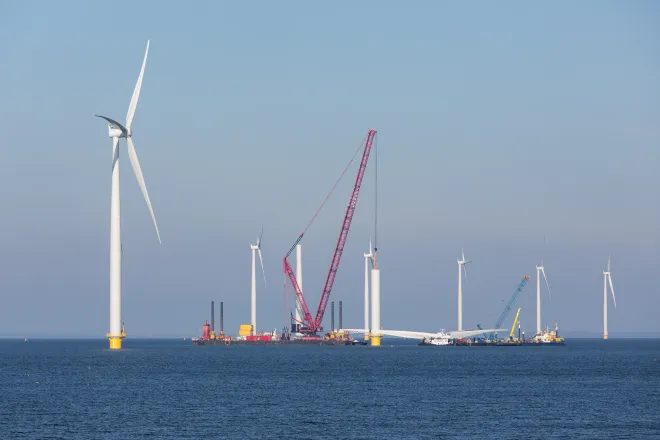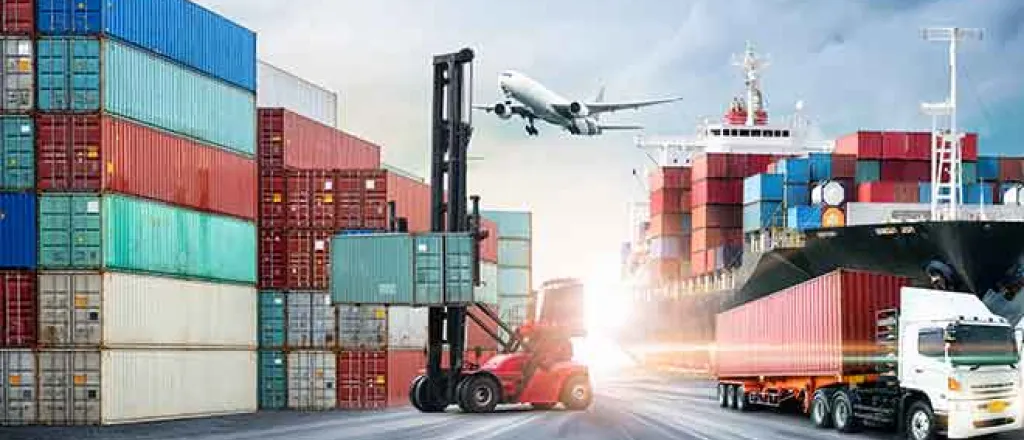
How to make fragile global supply chains stronger and more sustainable

Adel Guitouni, University of Victoria; Cynthia Waltho, University of Victoria, and Mohammadreza Nematollahi, University of Victoria
In 2019, global supply chains moved more than US$19 trillion in exported goods. The production and sale of many items we need and use — including toys, clothes, food, electronics and home furniture — depend on global supply chains.
For most of us, supply chains are no longer an abstract concept. The COVID-19 pandemic raised our awareness about the interdependence of our economic systems. We now understand the many ways these chains directly shape and impact our lives.
The pandemic has also revealed the fragility of global supply chains as U.S. President Joe Biden and others warn of the impact on the world economy of continuing supply-chain bottlenecks.
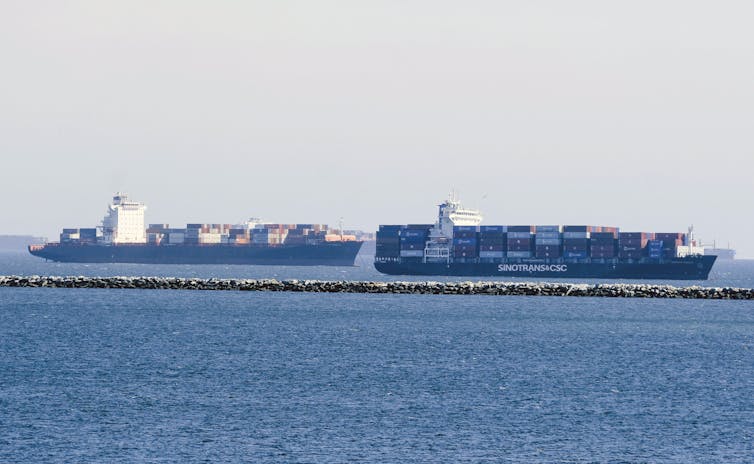
A supply chain is a set of organizations — like suppliers, manufacturers, distributors and retailers — that work together to provide end customers with a specific product or service.
The supply chain becomes global when the product or service crosses multiple international boundaries. Global supply chain organizations are directly and indirectly dependent on each other.
Supply chain problems cascade
Global supply chains have conventionally been focused on achieving financial efficiency above all else. The result is messy and fragile global supply chain systems.
In practice, the decisions made and actions taken by each organization affect the performance of the entire supply chain. A problem at any point feeds other problems at different stages of the chain.
A product shortage at a retail store, for example, might be caused by unsuspected problems such as labour issues, raw material shortages or clogged ports.
Semiconductor shortages are disrupting the automobile industry. Meanwhile, the cost of moving a container from China to the west coast of North America is estimated to have increased by 650 per cent since before the pandemic.
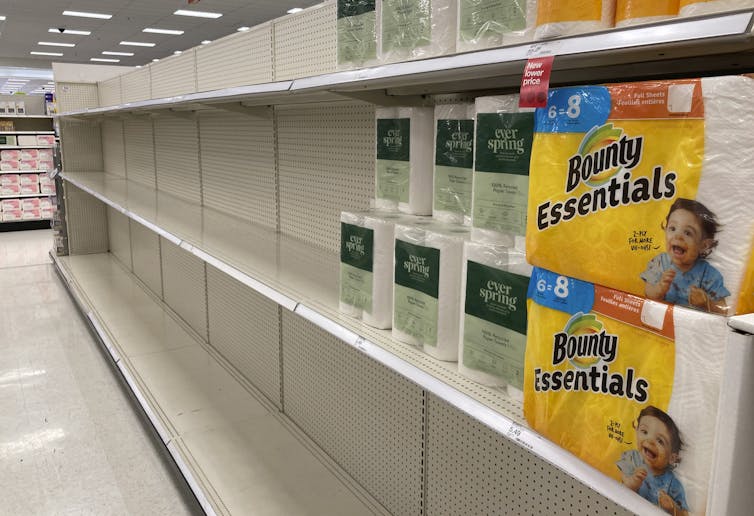
Race to the bottom
The pursuit of financial efficiency has shifted global production to low-cost regions, increased the flows of freights, caused port congestion and eroded the resilience of supply chains. Cutting costs above all else became a race to the bottom. It resulted in global economies with limited redundancies, contingencies and safeguards.
Fragile global supply chains are exacerbated by the fragmentation of decision-making processes, limited collaboration between buyers and suppliers and transactional management. There is no obvious centralized business or authority commanding and controlling these chains. Instead, several companies co-operate and compete for the value created.
Global supply chains also account for large contributions to greenhouse gas emissions and have an impact on air, land and water biodiversity and geological resources. A typical company’s supply chain is responsible for 80 per cent of its greenhouse emissions and more than 90 per cent of its contribution to air pollution generated in the production and distribution of a consumer product.
One billion metric tonnes of emissions could be saved if key suppliers to 125 of the world’s biggest purchasers increased their renewable energy input by 20 per cent.
The impact of supply chains extends to society. For example, the problem of forced labour is well-documented in today’s global supply chains, resulting in several controversies about modern slavery. More than 24.9 million people are documented to be working in slavery conditions in these chains.
Businesses in global supply chains are facing increased pressure from different stakeholders to adopt sustainability and disclose their impacts. A Dutch court recently ordered Shell to reduce its carbon emissions by 45 per cent from its 2019 levels. In the future, supply chain disclosure and transparency will become the norm of good governance.

Robust supply chains in demand
The world needs robust supply chains that are founded on sustainability, collaboration, trust, transparency, visibility and diversification of supply. That new model of supply chains could help combat economic fragility, climate change and inequality.
Global supply chains connect businesses and markets across all layers of economic, social and ecological systems. That means customers, governments and other stakeholders should encourage the emergence of robust and sustainable supply chains.
Responsible decision-making within supply chains has the potential to contribute to economic progress and societal well-being while maintaining the environmental integrity of the planet. Our preliminary research on sustainable blueberry supply chains, to be published soon, indicates that sustainability contributes to resilience.
Supply chain management is a “team sport.” Current research provides ample evidence that collaboration benefits global supply chains. Buyers and suppliers can enjoy higher service levels, more product availability and significant reductions in costs if they work together.
More preliminary research we’ve conducted on personal protective equipment supply chains in British Columbia, also to be published in the weeks to come, shows that collaboration between the supplier and customer reduces costs and risks by at least 17 per cent. Effective collaboration contributes to supply chain resilience and helps avoid future disruptions.
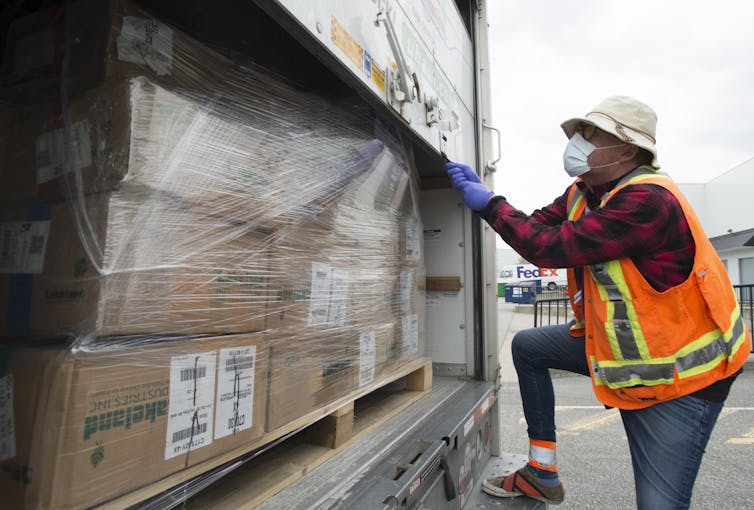
Building effective collaboration means rewarding responsible and long-term management of global supply chains and discouraging short-lived gains. Global supply chains should promote sharing the gains and the pains among buyers and suppliers.
Incentives need to be created to encourage this collaboration. Digitization of the economy will also contribute to better transparency and traceability in global supply chains.
Nonetheless, moving towards robust global supply chains isn’t straightforward because historically, they’ve been focused on short-term rewards. For decades, we’ve justified the development of fragile and fragmented global supply chains in the name of economic growth and financial efficiency. This may have provided short-term benefits, but it has created our current supply chain crisis.
Will that crisis reveal a way forward?![]()
Adel Guitouni, Associate Professor, International Business, University of Victoria; Cynthia Waltho, Postdoctoral Research Fellow, Business, University of Victoria, and Mohammadreza Nematollahi, Postdoctoral Research Fellow, Business, University of Victoria
This article is republished from The Conversation under a Creative Commons license. Read the original article.















